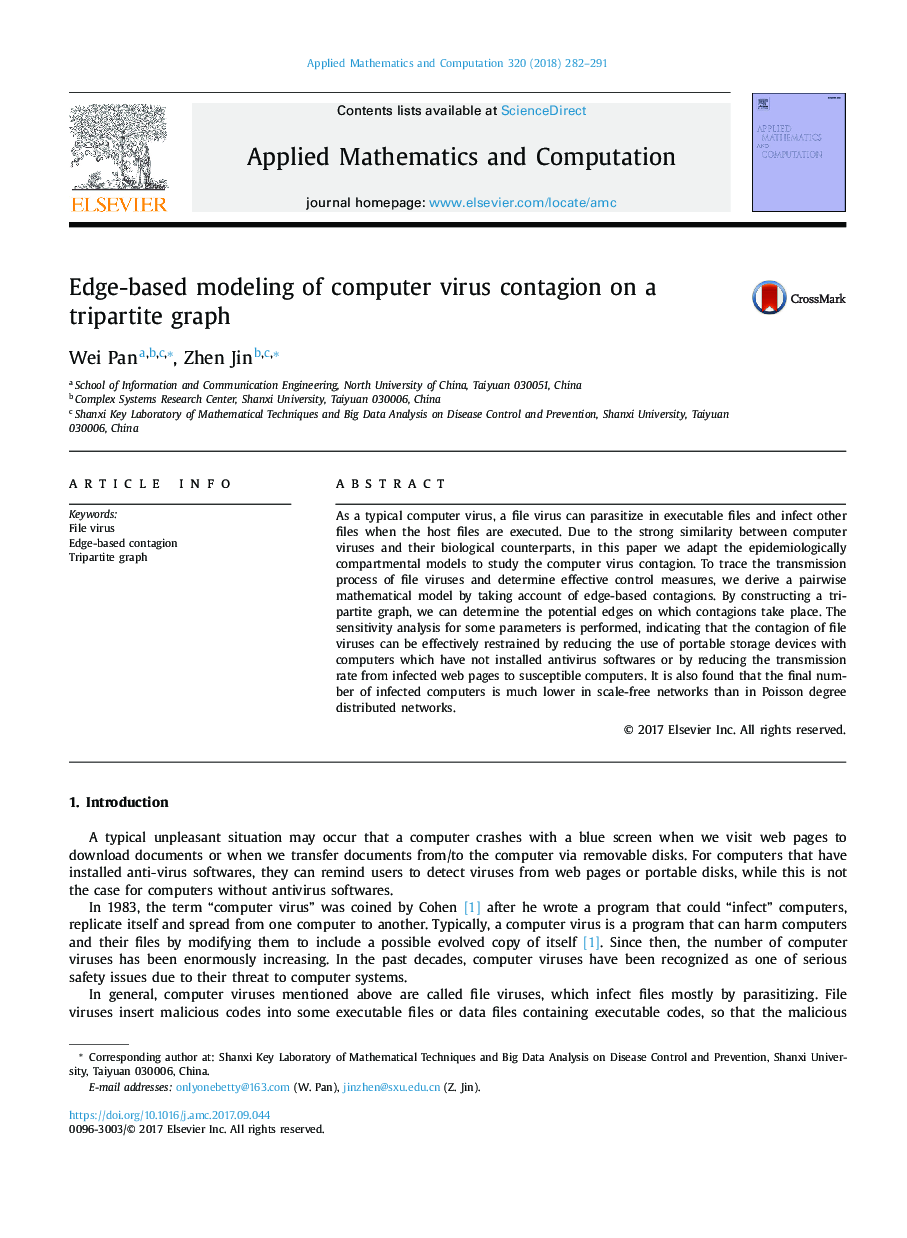| Article ID | Journal | Published Year | Pages | File Type |
|---|---|---|---|---|
| 8901409 | Applied Mathematics and Computation | 2018 | 10 Pages |
Abstract
As a typical computer virus, a file virus can parasitize in executable files and infect other files when the host files are executed. Due to the strong similarity between computer viruses and their biological counterparts, in this paper we adapt the epidemiologically compartmental models to study the computer virus contagion. To trace the transmission process of file viruses and determine effective control measures, we derive a pairwise mathematical model by taking account of edge-based contagions. By constructing a tripartite graph, we can determine the potential edges on which contagions take place. The sensitivity analysis for some parameters is performed, indicating that the contagion of file viruses can be effectively restrained by reducing the use of portable storage devices with computers which have not installed antivirus softwares or by reducing the transmission rate from infected web pages to susceptible computers. It is also found that the final number of infected computers is much lower in scale-free networks than in Poisson degree distributed networks.
Keywords
Related Topics
Physical Sciences and Engineering
Mathematics
Applied Mathematics
Authors
Wei Pan, Zhen Jin,
